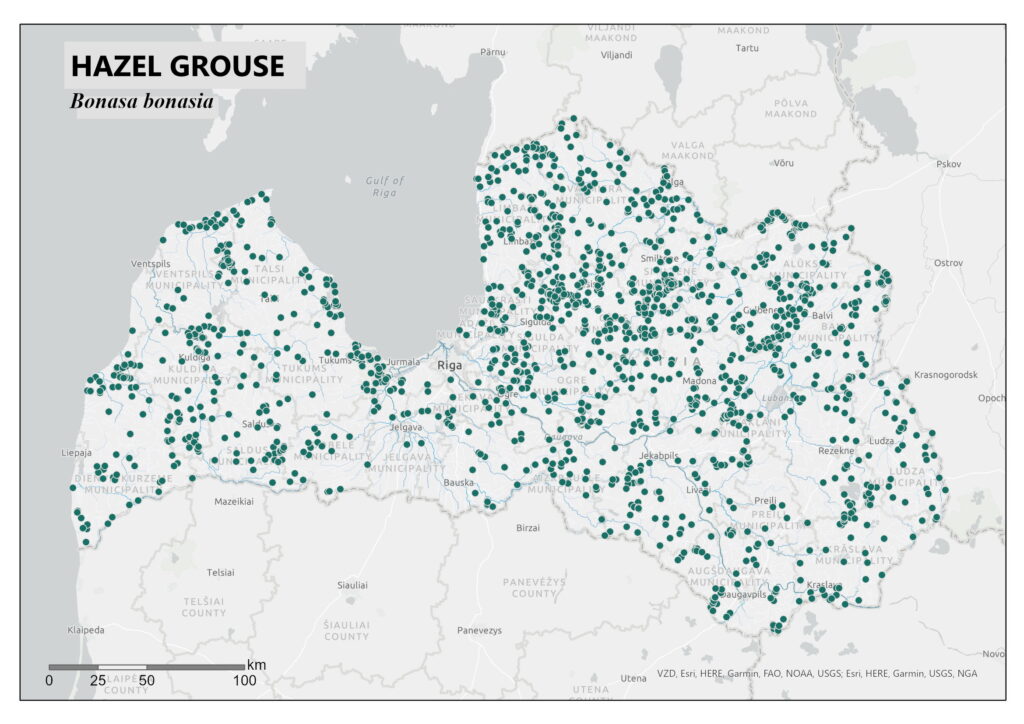Description
Russet-gray-brown, white-spotted bird in the size of a pigeon. Feeds both on trees and on the ground. Adult birds feed mainly on plants, while their young feed on insects and other invertebrates. A nest of hazel grouse is a dimple in the ground near the roots of a tree or shrub. The bird hatches once a year and lays 6-11 eggs. Young birds leave the nest soon after hatching and start feeding independently under guidance of adult birds. Haze grouse lives in a certain area all life. Period of the generation is 2.9 years. Hazel grouse inhabits mixed and coniferous forests with rich undergrowth.
Distribution
Hazel grouse is distributed from the east of France to the north of China in the south and from the north of Scandinavia to the east of Russia in the north. Range of distribution has slightly declined in Europe since the 1980’s. Distribution of the species in Latvia between year 1980-1984 and 2000-2004 has declined. A decline in distribution was also observed between year 2000-2004 and 2013-2017 year, but this is not statistically significant.The world population of hazel grouse is declining, but not so fast that the population is considered endangered. The trend in the European population is unknown. The nesting population in Latvia is 4858–24069 pairs (9716–48138 adult birds). Over the last ten years, the population of Latvia has declined by 50%.
Threats
Hazel grouse is affected by logging, predation, hunting, and gathering of wild plants.
Management practices for protection
The species is listed in Annex I of the Birds Directive and in Annex III to the Bern Convention. It is included in the red list of species of Latvian. A species protection plan has been developed.To ensure the protection of the species, it is necessary to establish a break in logging and forest management from 1 April to 30 June. The proportion of clear-cuts must be reduced, and forest fragmentation must be reduced. In forest management, it is important to ensure the preservation of structures (forest undergrowth, blueberries, log pieces) important for hazel grouse.
